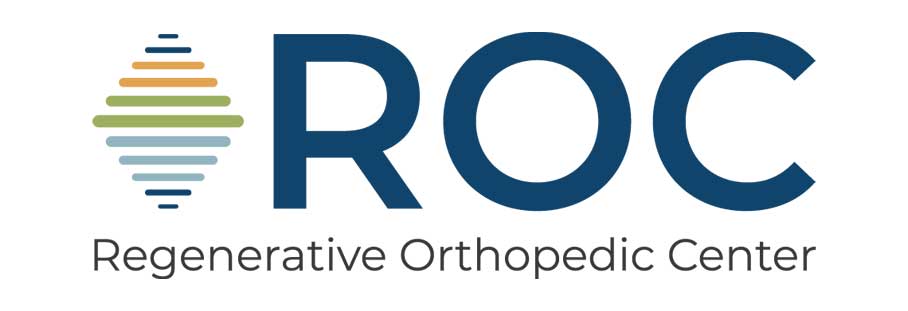Knowing the race course helps you run smarter and stronger. Training on or near the marathon route lets you practice pacing, terrain adaptation, and mental preparation in ways that can make race day feel familiar and controlled.
As Portland’s orthopedic and sports medicine experts, ROC recommends these key areas to help runners familiarize themselves with the iconic Portland Marathon course and build confidence before race day.
Why Train on the Actual Course (or Similar Terrain)?
- Bridges introduce elevation and rhythm changes. Train those transitions.
- Rolling hills demand paced effort and recovery awareness.
- Neighborhood surfaces (downtown to South Portland) mirror expected race-day conditions.
- Visual familiarity reduces mental strain and boosts pacing clarity.
Plus, noticing what makes you feel strong or sore, on these surfaces can flag early signs of joint or muscle stress before race week. If pain is making it hard to finish your course, it may be time to consult a sports medicine expert at ROC.
Key Training Sections to Prep for Race Day
Downtown Start & Burnside Bridge (Miles 1–2)
Expect a gradual climb early. Use downtown loops or repeated climbs in the Pearl District or Goose Hollow to mimic the first mile’s elevation change. Focus on relaxed form to avoid early fatigue.
Sellwood Bridge & South Portland (Miles 3–8)
This stretch includes the Sellwood Bridge and rolling inclines through South Waterfront. Try training loops over the Sellwood Bridge and portions of the nearby Springwater Corridor Trail for softer footing and steady elevation transitions.
Eastbank and Hawthorne, Broadway & Burnside Bridges (Miles 16–22)
Later in the race, you’ll run back across three downtown bridges—Hawthorne, Broadway, and Burnside. Bridge climbs at this point can feel more challenging after fatigue sets in. Practice back-to-back bridge intervals to simulate race-day fatigue and test your pacing strategy.
Vista Bridge & hills near Goose Hollow (Early miles)
Although the Vista Avenue Viaduct isn’t part of the marathon route itself, it provides great hill simulation through Goose Hollow, helping train your legs for mid-race course elevation.
Training Tips and Strategies
- Simulate bridge transitions: Practice repeated short hill efforts and fast downhills to mimic how elevation shifts feel throughout the race.
- Train pacing in rolling terrain: Work segments of South Portland or Sellwood corridor to practice even effort through undulating terrain.
- Focus on cooldown and mobility afterward: Bridges and hillwork increase impact load. Follow runs with foam rolling and hip mobility work to support recovery, especially in knees and hips.
- Study the visual cues along your run: Visual training helps reduce race-day surprises. Familiarize yourself with landmarks like Waterfront Park (start/finish), Lloyd District, Pearl, and South Waterfront.
Frequently Asked Questions
Can I run the entire 26.2 miles before race day as part of training?
Technically yes, but most training programs won’t have you running the full 26.2 miles until race day. Not to mention, city traffic and closures make full preview runs difficult. Instead, focus on individual segments: Sellwood Bridge loops, Eastbank Esplanade for bridge transition practice, and downtown hill reps in Goose Hollow or Pearl District.
How should I adjust my pacing for bridge climbs mid-race?
Expect reduced pace on bridge climbs especially later in the race. Use training intervals to practice pacing strategies that shift based on gradient.
Is running Sellwood just once enough to acclimate?
For structural familiarity, yes. But adding repeat bridge efforts or longer loops in South Waterfront and Springwater Corridor gives better cumulative muscle adaptation and pacing practice.
What if I feel knee or hip pain on these training routes?
Pain from repetitive bridge or hill training, even in good shoes, can signal a deeper issue. ROC’s orthopedic and sports medicine specialists can assess and support your progression. If pain persists, schedule a consultation, so you don’t lose training time.
Race Day Feeling Starts in Your Training
Course knowledge isn’t just about mileage—it’s about confidence. Familiarity with bridges, rolling hills, and neighborhoods helps you train smarter and feel grounded on race day.
ROC is here to help runners prepare confidently and move with intentional support. If familiar training terrain reveals discomfort or pain, our team is ready to help you address it—so you can approach race day stronger, smarter, and injury-free.
ROC is a proud sponsor of the 2025 Portland Marathon. This post is part of our “Never Miss a Mile” campaign. To see all of our running tips, please visit our Portland Marathon page.
